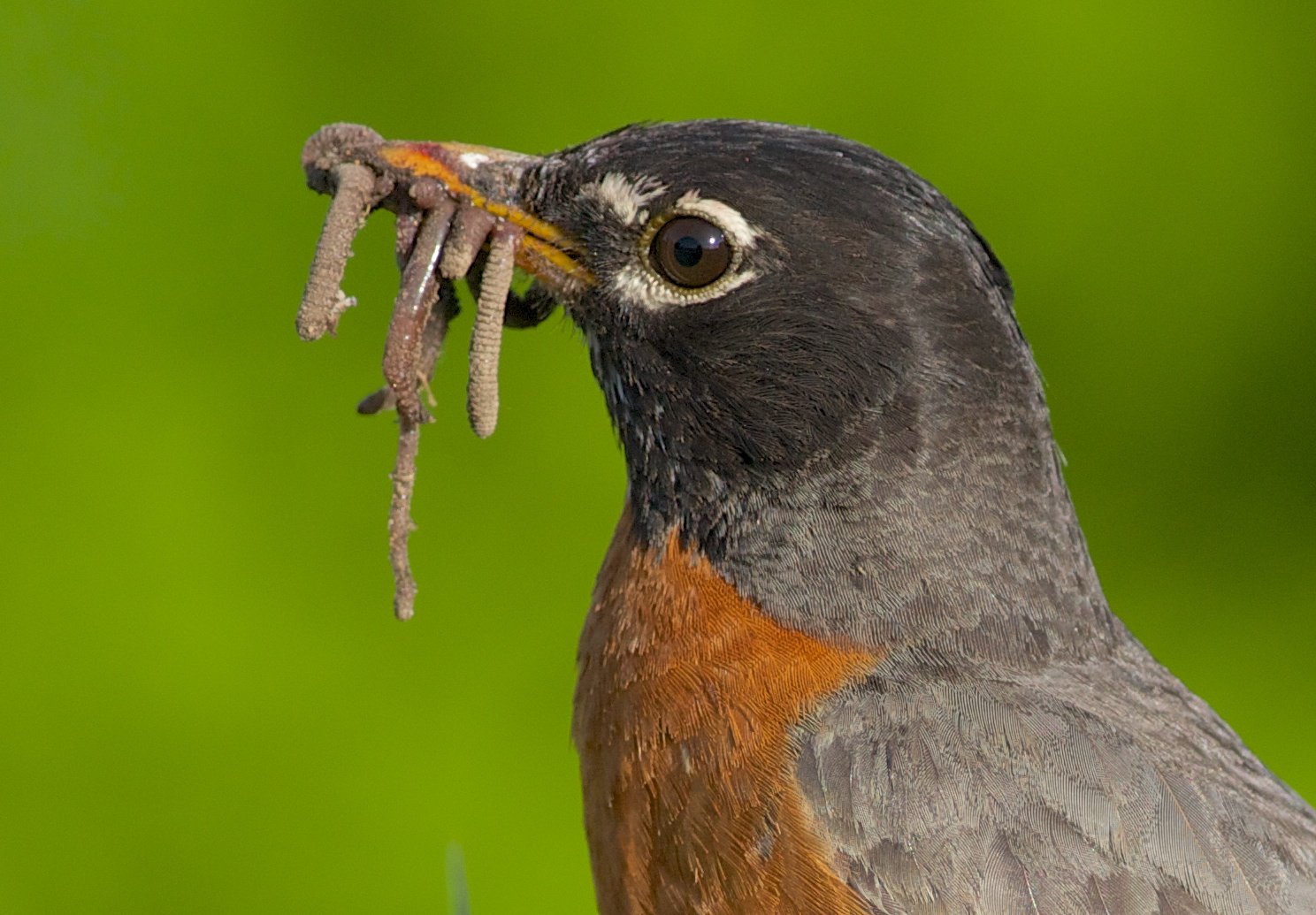American Robins are ubiquitous: they are both Wisconsin’s state bird and one of our most widely recognized avian species with their bold red breast and classic song.
During late summer into the early fall and winter, we start to get a trickle of questions: Where are the robins? Have they already migrated south?
These are great questions with fascinating answers. Some birds, including robins, take two approaches to the chillier seasons: some stick around while others migrate short distances (compared to long-distance migrants like warblers, which head south as far as Central or South America).
American Robins migrate based on the availability of their food sources (photo by Arlene Koziol).
Whether or not robins migrate has less to do with the length of day (which is one of the possible motivators for long-distance migrants) and has more to do with the availability of food. Climate change and unusual seasonal conditions affect plant and insect populations, which are natural food sources. In response, this may change the habits of short-distance migrants like robins. There are also signs that suggest warmer winters with less snow are causing more robins to overwinter in northern habitats instead of migrating.
So, if they are here, where are they? American Robins tend to flock in large nomadic groups in fall and winter, when their diet shifts to more abundant fruits instead of insects. This grouping up means they aren't as visibly widespread as they are in the spring and summer, when they are defending territories and nests.
HAVE A QUESTION YOU’D LIKE ANSWERED? EMAIL US!
Cover photo: An American Robin perched on a birch branch holds a bright red berry (via Pixabay).




